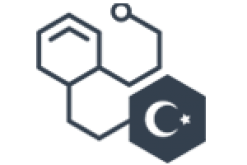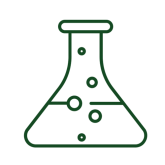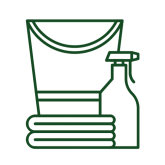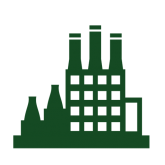ARE STRICTLY CONTROLLED CONDITIONS TRULY ENSURED? HOW CAN THEY BE VERIFIED?
Content addition date : 19-06-2025
The KKDİK (Turkish REACH) Regulation not only requires the implementation of “Strictly Controlled Conditions” during the registration of intermediates but also mandates the verification of how these conditions are fulfilled. To demonstrate the adequacy of the applied methods, monitoring of emissions and worker exposure is essential. These monitoring activities reveal both the effectiveness and integrity of the system.
► Why Is Process Monitoring Necessary?
Monitoring the integrity of the facility (e.g., monitoring pressure within the system) enables early detection of potential breaches in the system’s containment.
The entire production process—from charging reactors to packaging the final product—is expected to be carried out in a system designed to ensure strict containment of the substance.
All transfers of intermediates are carried out via pipeline systems. The integrity of this system can be monitored using two complementary systems:
- Pressure monitoring systems in pipelines and tanks
- Leak detection sensors (e.g., at sampling points, connection points, etc.)
- These systems are connected to a control room and issue alarms in case of abnormalities.
- Monitoring systems must be checked and maintained regularly.
- Each alarm incident must be recorded, investigated, and corrective action taken if necessary.
► How Should Worker Exposure Be Monitored?
- Worker exposure is monitored through air sampling.
- Both personal and fixed-point sampling can be performed.
- Monitoring is conducted in accordance with national or international standards (e.g., EN 689).
Workers to be monitored include:
- Sampling personnel
- Loading/unloading operators
- Maintenance workers
- Production operators
- A separate monitoring program may be developed for employees involved in scheduled maintenance.
- Samples are analysed in accredited laboratories and recorded along with the following information:
- Description of the process, task duration, substances used
- Number of employees in the sampled area
- Sampling duration
- Results
In many samples, the substance concentration should be below the detection limit of the analytical method.
If exposure is detected:
- Tasks causing exposure must be identified
- Additional measures must be taken (e.g., improved ventilation, enhanced cleaning, use of PPE)
- The effectiveness of the PPE must be indicated
- Changes over time must be analyzed
In some cases, biological monitoring and health surveillance may be required. If carried out:
- The targeted health effect (e.g., dermal, respiratory sensitivity) must be specified
- These data may serve as long-term evidence that exposure is under control.
► How Are Environmental Releases Monitored?
- Environmental releases may be monitored as required by KKDİK or environmental legislation (e.g., IED Directive, air/water permits).
- In some cases, indirect testing (TOC, COD, toxicity) is used to track all organic substances.
- However, in certain cases, direct measurement of the substance itself is required.
To demonstrate that the intermediate is not released into the environment, results such as:
"Measured values are below the detection limit of the analytical method"
are acceptable.
Monitoring records must include:
- Description of the process causing the release
- Applied risk management measures
- Release conditions, substance details
- Sampling points, methods, and standards
- Laboratory information and results
Compliance with permits alone is not sufficient!
To meet the definition of “strictly controlled conditions,” the use of effective containment systems must be demonstrated.
What If the Intermediate Is Found in Waste?
The presence of an intermediate in waste does not automatically mean it has been released into the environment.
If waste management complies with the strict control requirements (e.g., incineration), it is not considered an environmental release.
For detailed information on the actions your company must take under strictly controlled conditions, please contact CRAD.
















